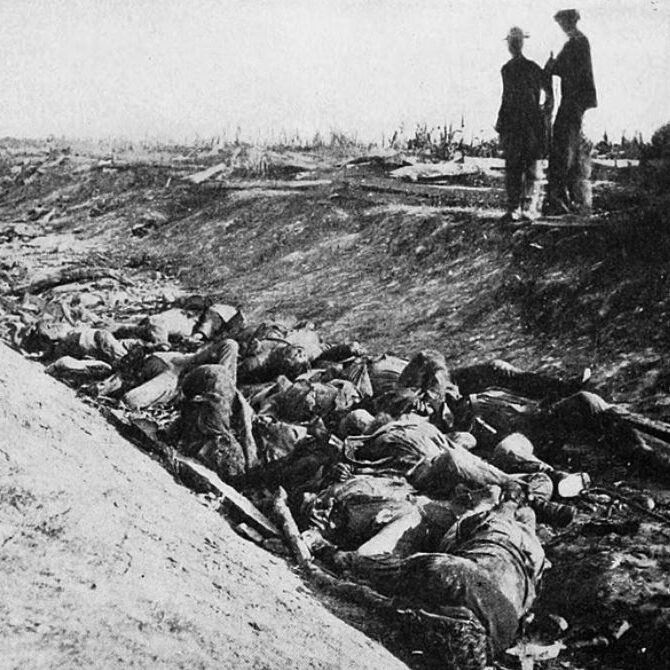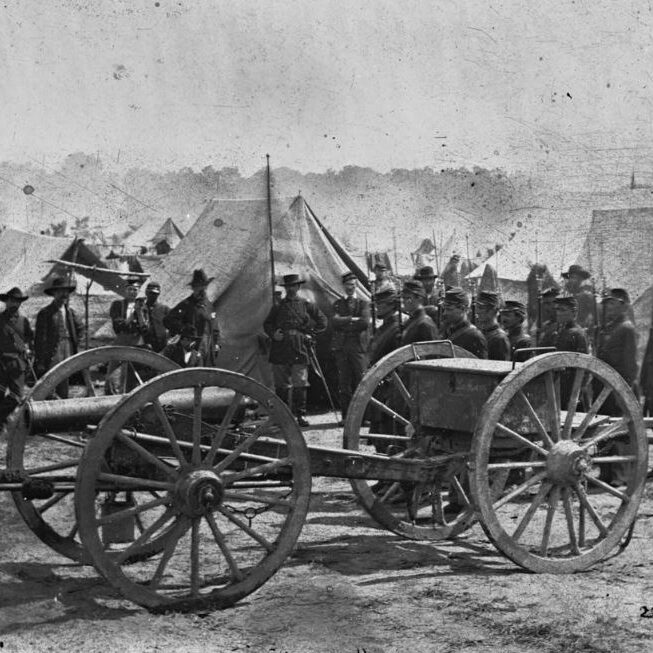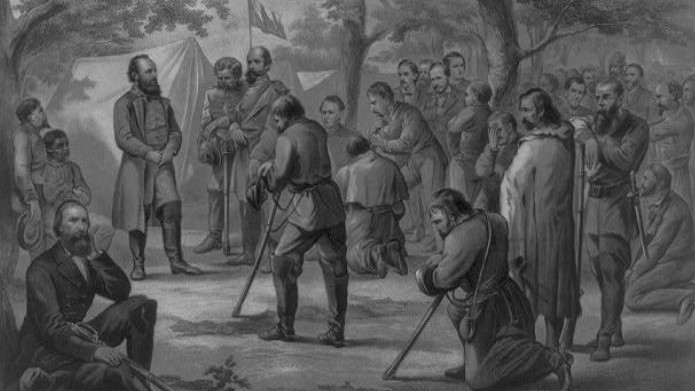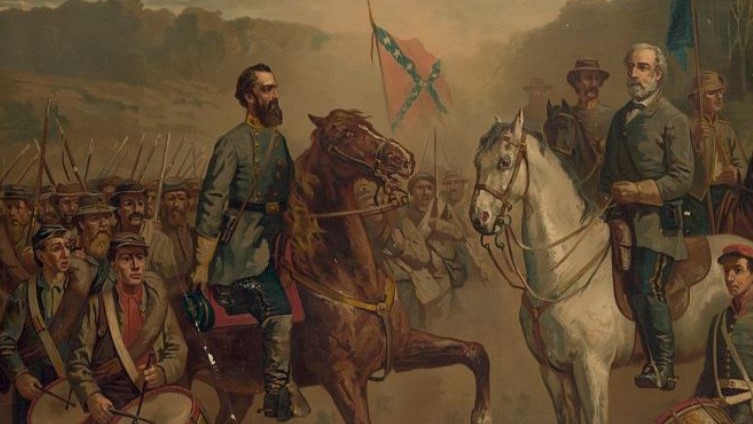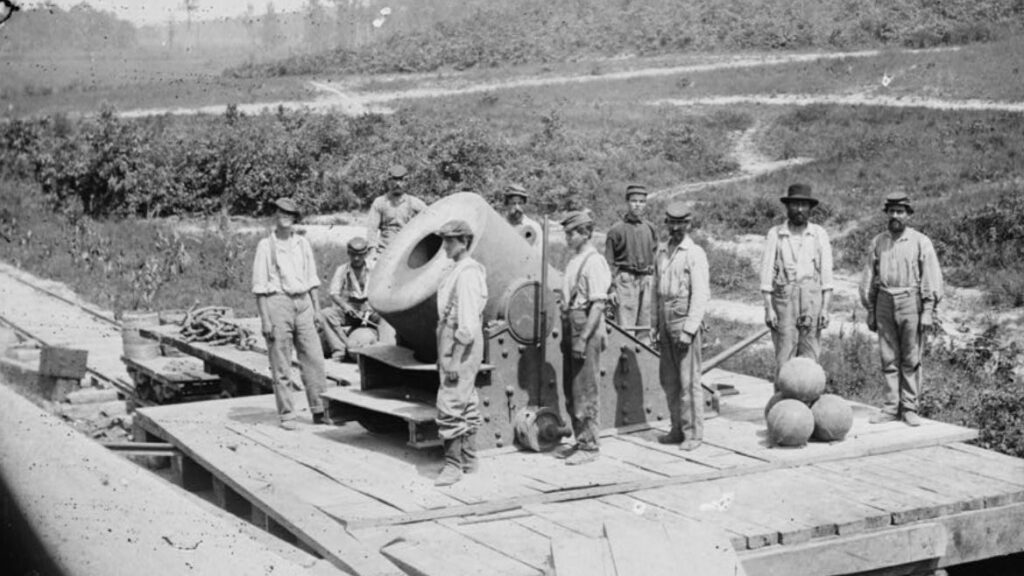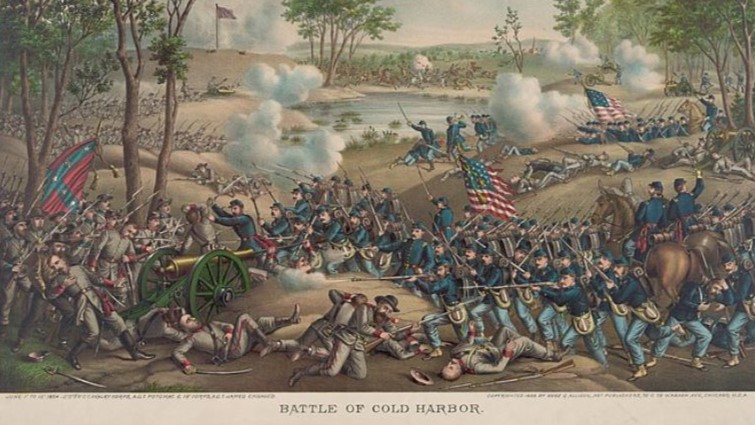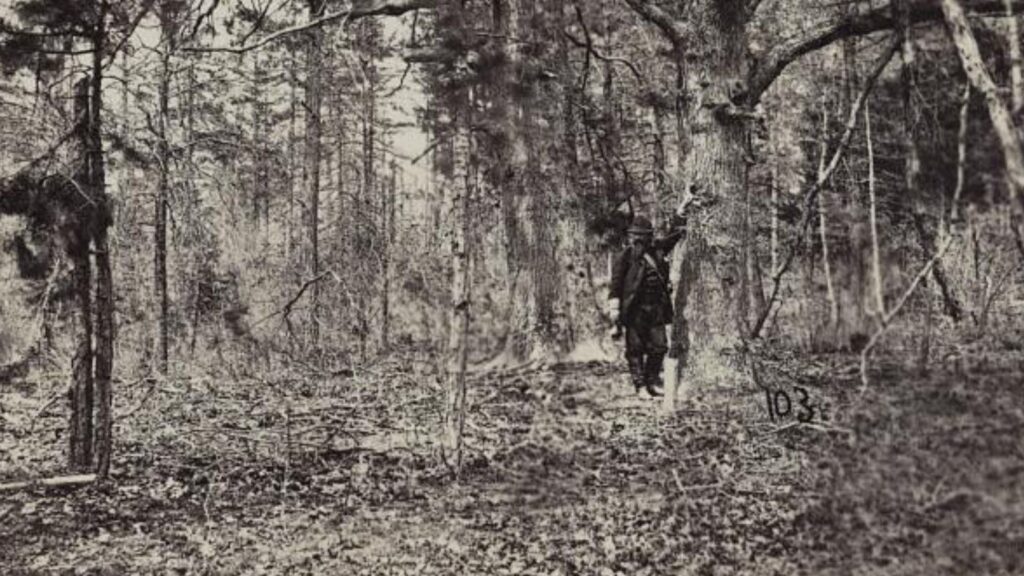The Battle of Antietam was fought on September 17, 1862. This battle stands as a key moment during the American Civil War – infamous for its staggering casualties. It remains the bloodiest single day in American warfare and one the bloodiest battles of the Civil War.
The clash between Union and Confederate forces near Sharpsburg, Maryland, resulted in around 23,000 casualties. The battle’s exceptional bloodiness can be attributed to factors such as the fierce determination of both sides, tactical errors, and the terrain’s impact on the intensity of combat.
In this article, we unravel the complexities that transformed this battlefield into a relentless symphony of brutality and explore the profound consequences of that fateful day.
- 1. Key Figures at the Battle of Antietam
- 2. General Lee's Operational Plan
- 3. Battle of Antietam: Key Battle Phases
- 4. McClellan's Tactics at Battle of Antietam
- 5. Geographical Challenges at the Battle of Antietam
- 6. Miscommunication at Antietam
- 7. International Perspectives and Context
- 8. America's Bloodiest Day: The Aftermath and Legacy
- Further Reading
1. Key Figures at the Battle of Antietam
Key Union Commanders at the Battle of Antietam
General George B. McClellan: Commander of the Army of the Potomac. Known for his cautious nature and missed opportunities at Antietam, despite having a larger force.
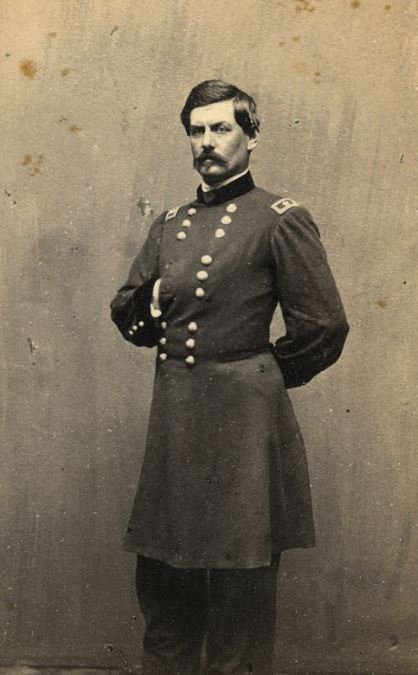
Major General Edwin V. Sumner: Commanded the II Corps and played a crucial role in anchoring the Union center against heavy Confederate attacks.
Major General Ambrose Burnside: Led the IX Corps and faced the difficult task of crossing Antietam Creek under fire. His late arrival and unclear orders hindered the Union advance.
Major General Joseph Hooker: Led the I Corps and spearheaded the early morning attack on Lee’s left flank. Known for his aggressive leadership but also impulsive tactics.
Key Confederate Commanders at the Battle of Antietam
General Robert E. Lee: Commander of the Army of Northern Virginia, daringly leading his outnumbered army into Maryland. Lee displayed tactical brilliance in shifting troops to defend key points.
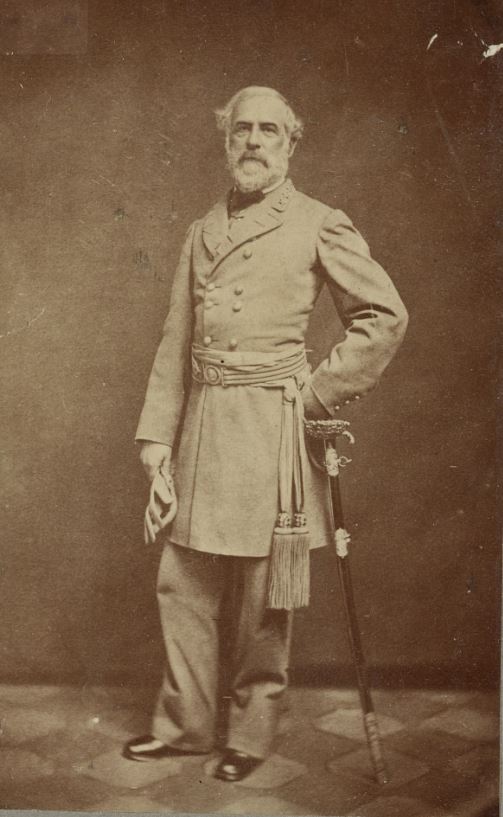
Lieutenant General James Longstreet: Commanded the right wing of the Confederate army and held against repeated Union assaults at the “Sunken Road.”
Lieutenant General Thomas J. “Stonewall” Jackson: Commanded the left wing and clashed with Hooker’s corps. Jackson’s fierce resistance ultimately proved costly for the Confederates.
Major General A.P. Hill: Led the “Light Division” and played a critical role in reinforcing the Confederate center and blunting Union attacks.
Additional Key Figure at the Battle of Antietam
Clara Barton: While technically not a military figure, Clara Barton played a significant role at the Battle of Antietam, earning her place among the key figures of the battle.

After arriving at Sharpsburg, Maryland, Clara witnessed the overwhelming human cost of the battle firsthand. She tirelessly worked to alleviate the suffering, providing vital aid to wounded soldiers on both sides of the conflict.
Recognizing the chaotic state of medical care, Barton utilized her organizational skills to establish makeshift hospitals and coordinate relief efforts. This included collecting supplies, finding shelter for the wounded, and providing emotional support.
Unlike traditional female volunteers who primarily served food or sewed bandages, Barton ventured closer to the battle lines, even venturing under fire, to directly assist soldiers and transport them to safety.
2. General Lee’s Operational Plan
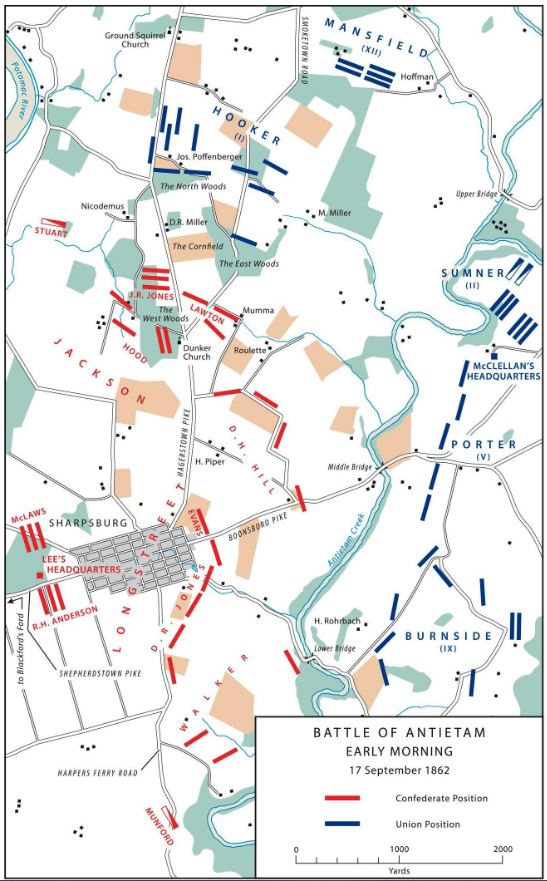
General Lee’s Maryland Campaign in 1862 hinged on a daring tactical plan, audacious in its conception but fraught with inherent risks. Let’s dissect the three core elements that defined this gamble:
1. Divided Advance:
Lee fragmented his army, splitting it into five separate corps. This aimed to achieve multiple objectives simultaneously:
- Capturing the vital Harpers Ferry arsenal;
- Securing communication lines across Maryland; and
- Concentrating his forces near Sharpsburg for a decisive battle.
However, this dispersal exposed his corps to piecemeal attacks and stretched his limited logistical capabilities.
2. Rapid Movement:
Banking on Union General McClellan’s perceived cautiousness, Lee prioritized speed.
He hoped to exploit any delays in Union troop concentration and deliver a crushing blow before they could consolidate their forces.
This gamble relied heavily on swift execution and precise coordination across fragmented corps, a challenge made even more daunting by the lack of readily available communication technology.
3. Offensive Focus:
Lee envisioned dictating the terms of engagement. He planned to launch a surprise attack on the Union army, leveraging the element of initiative and potentially shattering their morale.
This aggressive approach aimed to force a decisive battle on Confederate terms, potentially crippling the Union war effort in one fell swoop. However, relying solely on an offensive strategy left Lee vulnerable to counter-attacks and required flawless execution to avoid being caught off guard himself.
Lee’s tactical plan at Antietam was a calculated gamble. While audacious and potentially game-changing, it was riddled with risks.
The fragmented army structure, reliance on speed, and offensive focus, while strategically sound, demanded flawless execution in the face of logistical limitations and a determined opponent.
3. Battle of Antietam: Key Battle Phases
The Battle of Antietam remains the bloodiest single day in American history.
To understand this brutal reality, let’s dissect the key phases of the battle, highlighting the staggering human cost at each:
Morning Phase (Dawn – 9:00 AM):
The morning phase saw Federal troops grappling with Confederate resistance at Lower Bridge, setting the stage for the unfolding drama.
Hooker and Hood clash: Union General Hooker’s attack on the Confederate left flank met stiff resistance from General Hood’s division. The cornfield became a death zone, changing hands six times.
Mansfield and Sedgwick push forward: Union reinforcements arrived, but General Mansfield was mortally wounded. Intense fighting raged near the Dunker Church.
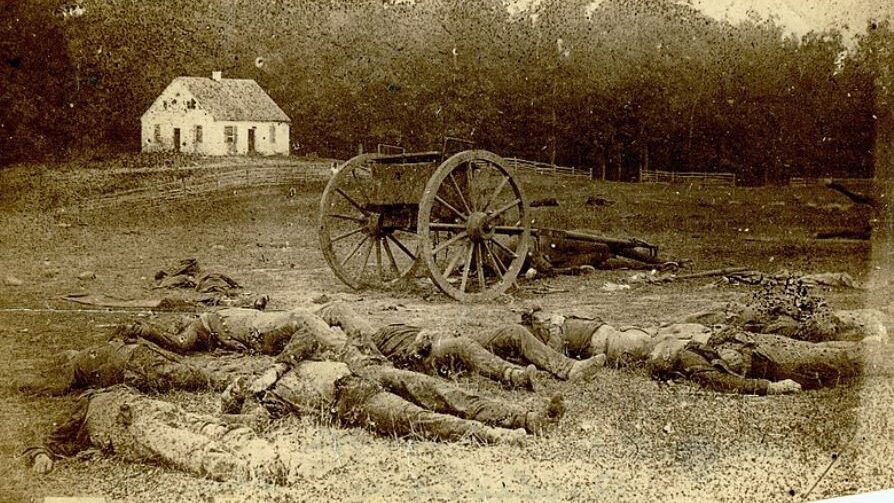
Midday Phase (9:00 AM – 2:00 PM):
Sunken Road becomes a bloodbath: Repeated Union assaults targeted the Sunken Road, a sunken lane offering Confederates excellent cover. The confined space turned into a killing ground, claiming thousands of lives on both sides.
General Richardson and General Barlow were among the fallen Union leaders.
Burnside struggles at the bridge: General Burnside faced delays crossing the Antietam Creek, allowing Confederates to solidify their defenses. His eventual assault suffered substantial losses before being stalled.
Afternoon Phase (2:00 PM – Dusk):
A.P. Hill arrives, pushes Union back: General A.P. Hill’s Confederate reinforcements tipped the scales. Exhausted Union troops were pushed back.
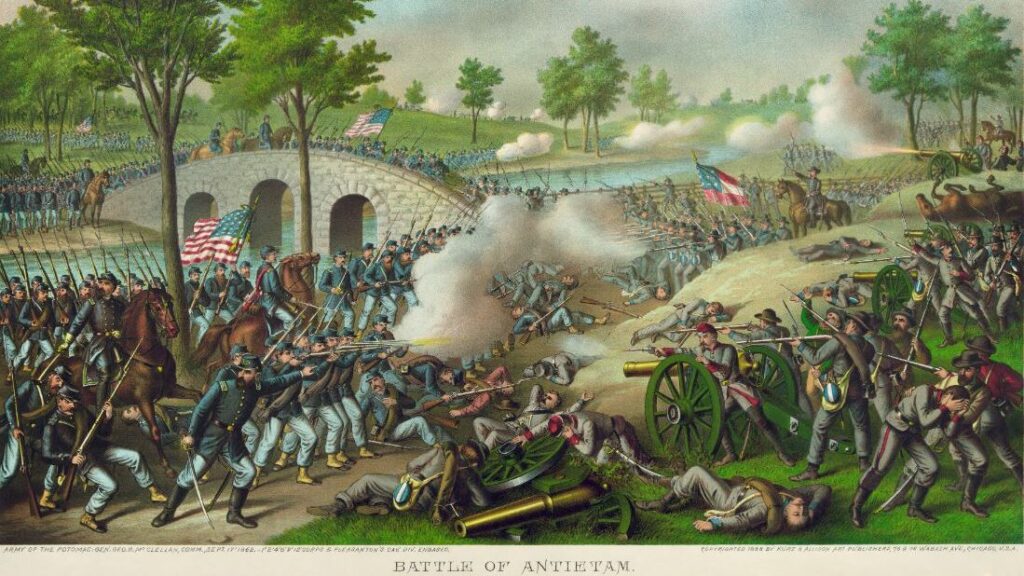
Burnside finally crosses, but too late: Burnside secured a foothold across the creek but arrived too late to significantly influence the battle’s outcome.
4. McClellan’s Tactics at Battle of Antietam
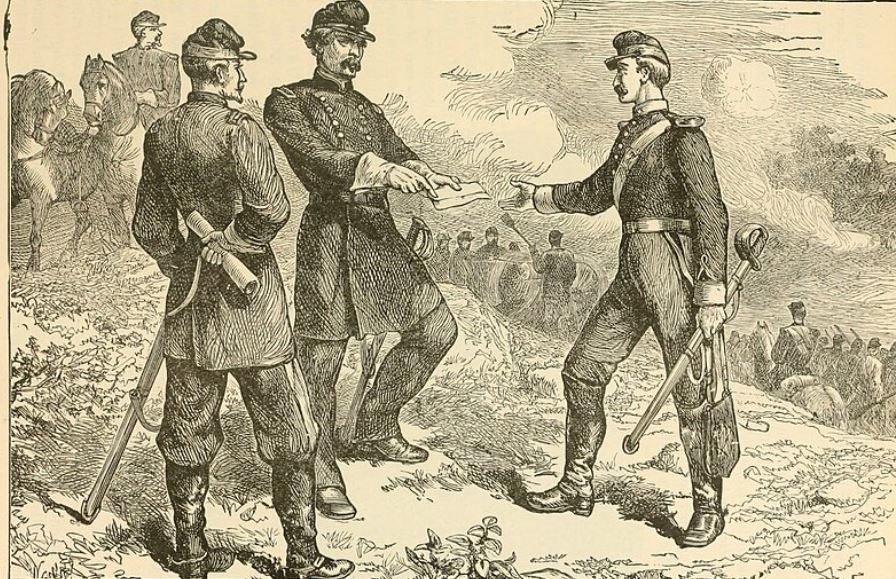
The Battle of Antietam places General George B. McClellan in the spotlight. He displayed some strengths, for example:
- Multi-pronged attack: Recognizing the Confederates’ strong defensive position, McClellan planned a coordinated assault on both flanks and the center. This aimed to stretch Lee’s thin forces and exploit potential weaknesses.
- Artillery preparation: A massive artillery bombardment softened Confederate defenses before infantry attacks, showcasing McClellan’s awareness of firepower’s importance.
- Reserve utilization: Unlike previous battles, McClellan kept reserves available, allowing him to respond to changing battlefield conditions and reinforce faltering attacks.
But, General George B. McClellan’s cautious nature often overshadows his strategic thinking.
McClellan’s Reliance on Poor Intelligence
General McClellan’s overestimation of Confederate numbers at the Battle of Antietam stands as a major factor contributing to his cautious approach and missed opportunities.
McClellan heavily relied on the information gathered by Allan Pinkerton, a renowned detective leading a Union spy network. While Pinkerton provided valuable insights, his estimates often proved inflated due to methodological limitations and a tendency to sensationalize his findings.
Believing he faced a larger enemy, McClellan delayed attacks and launched them piecemeal, allowing Lee to shift forces and defend effectively.
McClellan’s Indecision
The discovery of General Robert E. Lee’s operational plan, Special Orders Number 191, presented McClellan with a rare opportunity – a chance to turn the tide decisively in favor of the Union.
Despite the potential for a decisive victory, McClellan hesitated, allowing precious moments to slip away.
McClellan, armed with the knowledge of Lee’s plans, failed to fully exploit the vulnerabilities in the Confederate strategy.
The hesitation in pressing the advantage meant that Lee’s forces, despite being in a precarious position, managed to evade a potentially devastating blow.
McClellan’s reluctance to push for a decisive victory, extended the duration of intense fighting. The casualties on both sides escalated as a result.
Antietam remains a testament to the cost of missed opportunities and the importance of decisive action in the face of a determined enemy.
5. Geographical Challenges at the Battle of Antietam
Three key locations – Antietam Creek, Miller’s cornfield, and the Sunken Road – bore witness to some of the war’s most intense fighting – their features shaping the battle’s ferocity.
Antietam Creek:
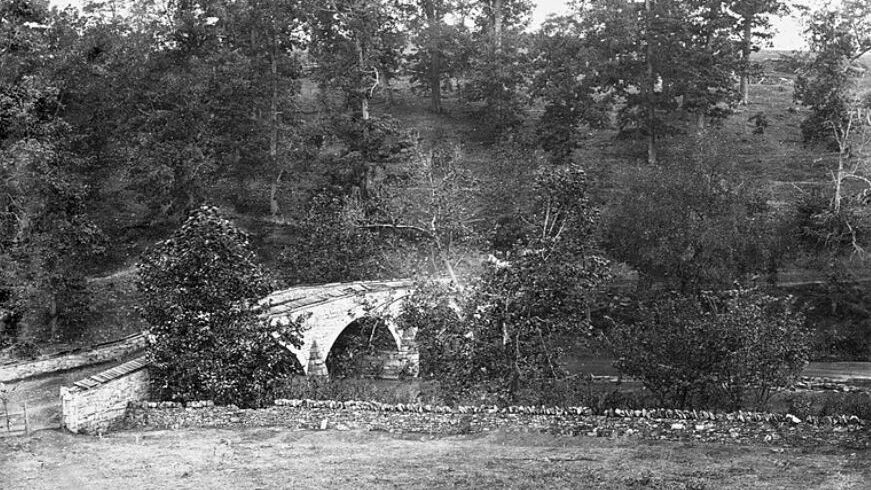
This meandering waterway served as a natural barrier for the Confederate army, positioned on the western bank.
Crossing the creek under heavy fire proved costly for Union troops, funneling them into chokepoints like Burnside Bridge, where relentless assaults met with staggering losses.
The creek’s muddy banks and limited crossing points turned tactical maneuvers into desperate slogs, amplifying the battle’s deadliness.
Miller’s cornfield:
Once a peaceful expanse, this tall cornfield became a hellish labyrinth. The stalks offered limited cover, forcing soldiers to fight at close quarters, transforming the field into a swirling vortex of musket fire and hand-to-hand combat. The dense foliage obscured lines of sight, contributing to the chaos and adding to the terrifying intimacy of the fighting.
The Sunken Road:

This sunken lane, originally used for farming, offered the Confederates a formidable defensive position.
Its embankments provided natural cover, hindering Union charges and inflicting immense casualties. The confined space created a meat grinder, with repeated attacks and counterattacks leaving the lane choked with bodies.
Capturing the Sunken Road became a symbolic goal for the Union, but its entrenched defenders exacted a heavy toll.
The Death Trap of these Locations
The interplay of these locations amplified the battle’s brutality.
Crossing the creek under fire, soldiers stumbled into the cornfield’s deadly confusion, then faced the entrenched Confederates in the Sunken Road’s claustrophobic hell.
Each location amplified the deadliness of the battle, transforming a rolling landscape into a killing ground.
6. Miscommunication at Antietam
The Battle of Antietam holds stories of missed opportunities and tragic misunderstandings.
One such incident involved Brigadier General Robert E. Rodes and Lieutenant Colonel James N. Lightfoot, revealing the devastating consequences of communication failures in the chaotic fog of war.
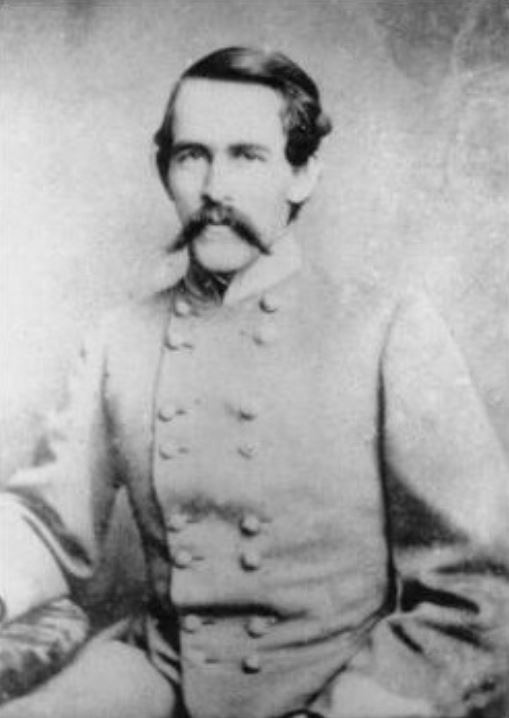
Rodes’ brigade initially formed part of the Confederate defensive line near Sharpsburg, Maryland.
As the battle unfolded, General Lee planned a counteroffensive against the Union left flank. Rodes received orders to wheel his brigade leftward and attack a specific position.
The Crucial Moment:
Lightfoot was instructed to throw his right wing back out of the road, meaning to adjust their position within the line. Instead, he understood it as a full retreat order.
He issued a clear command for the entire regiment to “about face” and march forward, which was interpreted as a retreat order by other regiments nearby.
The gap created by the retreating regiments exposed other Confederate units and weakened their overall defense. The disrupted formation prevented them from effectively repelling the enemy attack.
The consequences of miscommunication were severe, leading to confusion, retreats, and the loss of commanders.
7. International Perspectives and Context
The Battle of Antietam wasn’t just the bloodiest day in American history; its echoes resonated across the Atlantic, profoundly impacting the global stage.
While the carnage unfolded near Sharpsburg, Maryland, European powers, primarily England and France watched on to examine their next diplomatic moves.
Britain: Cotton, Ethics, and the Prime Minister’s Dilemma
Britain, heavily reliant on Southern cotton, initially viewed the Confederacy favorably.
Public opinion, however, swayed against slavery, complicating matters.
Powerful voices like William Gladstone, the future Prime Minister, condemned slavery and warned against supporting a pro-slavery nation. These sentiments, particularly prevalent within the Anti-Slavery Society, exerted significant pressure on Prime Minister Lord Palmerston.
While he initially leaned towards recognizing the Confederacy, Palmerston faced a dilemma: appeasing domestic sentiment or protecting Britain’s economic interests.
France: Napoleon’s Gambit and the Specter of Intervention
France, under Napoleon III, saw the war as an opportunity to expand its influence in the Americas and possibly weaken the US.
Recognizing the Confederacy could serve this purpose, but Napoleon also faced public opposition from intellectuals and activists who condemned meddling in a war fueled by moral injustice.
The possibility of the conflict escalating into a wider European war loomed large, making intervention a risky gamble.
Antietam: A Turning Point on Two Continents
Antietam, though tactically inconclusive, proved a key moment in the Civil War.
While the Union suffered heavier losses, it halted Lee’s invasion of the North, offering a much-needed psychological boost and importantly, allowing President Lincoln to issue the Emancipation Proclamation.
This masterstroke effectively reframed the war as a fight against slavery, eliminating any justification for European intervention.
When news of Antietam and the Emancipation Proclamation reached Europe, public opinion shifted decisively against the Confederacy.
Britain and France became hesitant to offer support to a nation now explicitly fighting to preserve slavery. This decision had profound consequences for the war’s outcome.
While the battle itself did not provide a decisive victory, it did serve as a deterrent for foreign powers considering recognition of the Confederacy.
8. America’s Bloodiest Day: The Aftermath and Legacy
The Battle of Antietam, with its staggering casualties and far-reaching consequences for the outcome of the Civil War.
The strategic outcome of Antietam was tactically inconclusive, but its significance lay in its broader impact on the course of the war and the psyche of the nation.
The Scale of the Loss at the Battle of Antietam
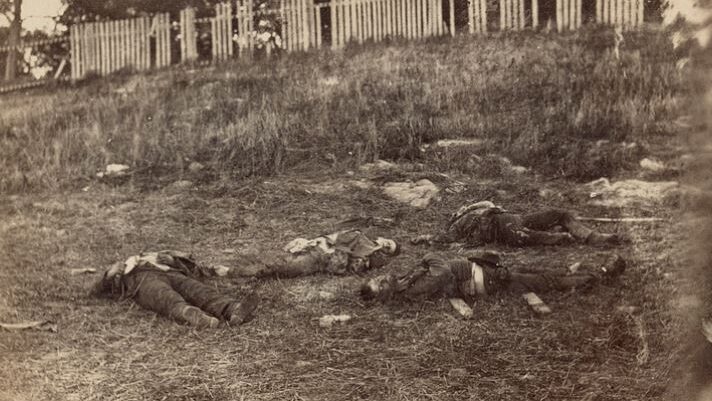
The toll exacted on both Union and Confederate forces at Antietam was immense, earning the battle the grim distinction of being the bloodiest single day in American history.
Union casualties amounted to 12,401, with 2,108 dead, 9,540 wounded, and 753 missing.
The Confederate side suffered 10,316 casualties, including 1,546 dead, 7,752 wounded, and 1,018 missing.
The loss of generals on both sides, with nine Union and nine Confederate generals among the casualties, underscored the gravity of the conflict.
The strategic outcome of Antietam was tactically inconclusive, but its significance lay in its broader impact on the course of the war and the psyche of the nation.
The Emancipation Proclamation
The aftermath of Antietam rippled through the corridors of power in Washington and across the Confederate states. President Abraham Lincoln, deeply affected by the loss of life, faced the task of managing personal grief.
It was in the aftermath of Antietam, on September 22, 1862, that Lincoln issued the Emancipation Proclamation.
The Emancipation Proclamation was a watershed moment, transforming the character of the war.
While technically not an immediate liberation of all slaves, it declared freedom for slaves in Confederate-held territory. Lincoln’s proclamation reframed the war as not merely a struggle to preserve the Union but as a moral imperative against slavery.
The proclamation had international implications, making it morally untenable for European powers, particularly England and France, to support the Confederacy openly.
A Failed Invasion of The North
The battle failed to result in a decisive victory. But it did halt General Robert E. Lee’s invasion of the North.
Before Antietam, Robert E. Lee’s bold invasion of Maryland had the Union reeling. Victories at Second Manassas and Chantilly boosted Confederate morale and raised fears of the war reaching Washington D.C.
Antietam stopped this momentum. While both sides suffered heavy losses, the Confederacy failed to achieve its strategic objectives. This forced Lee to retreat across the Potomac.
Public morale in the North had plummeted with Lee’s invasion. But following Antietam, despite its high casualties, the North could finally claim it had stopped the Confederate advance. This boosted public support for the war effort and provided a critical turning point in national sentiment.
The Sacrifice on the Fields of Antietam
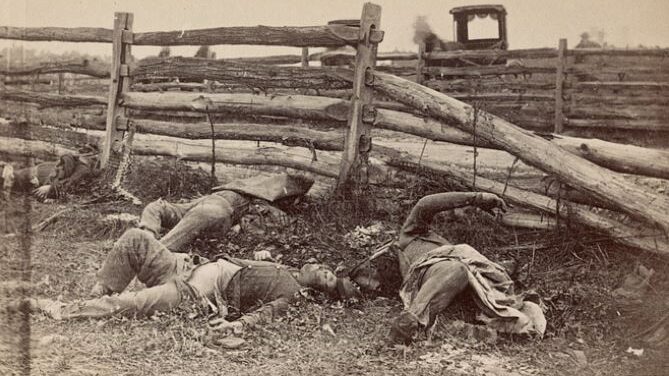
As we reflect on the aftermath and legacy of Antietam, we confront the somber reality of the sacrifices made on both sides of the conflict.
The fields that witnessed the bloodiest single day in American history became a hallowed ground, where the sacrifices of the fallen became an enduring symbol of the price paid for a Union.
Further Reading
If you enjoyed this article, you may be interested to read more about the American Civil War events, or perhaps read about the bloodiest battles of the Civil War or the South’s important victories. Read here for more general American history.

